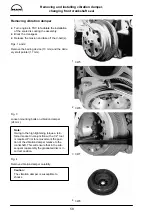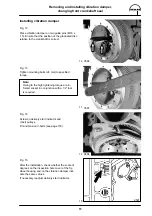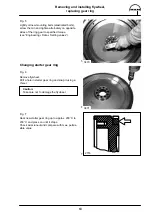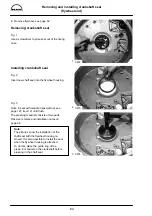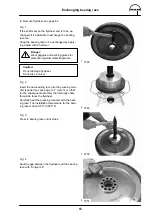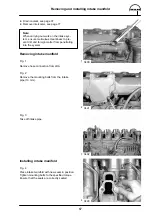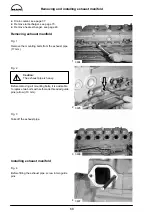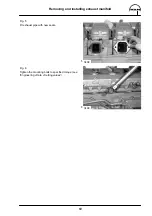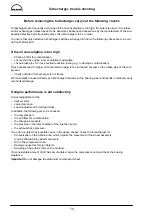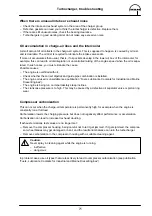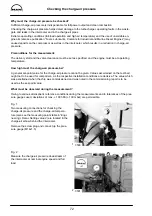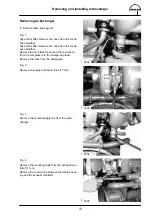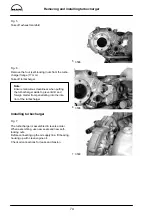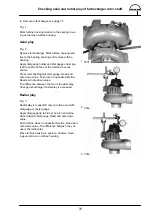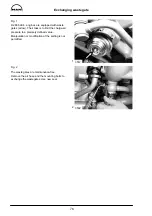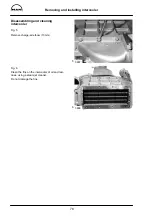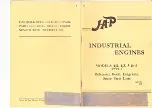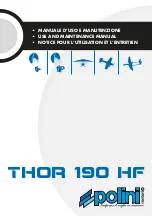
1
2
Checking the charge-air pressure
72
Why must the charge-air pressure be checked?
Sufficient charge-air pressure is indispensable for full power output and clean combustion.
Checking the charge-air pressure helps detect damage to the turbocharger, operating faults in the waste-
gate and leaks in the intercooler and in the charge-air pipes.
Extreme operating conditions (full-load operation and high air temperature) and the use of unsuitable en-
gine oils (also see publication ”Fuels, Lubricants, Coolants for Industrial and Marine Diesel Engines”) may
cause deposits on the compressor as well as in the intercooler, which results in a reduction in charge-air
pressure.
Preconditions for the measurement:
The delivery start and the valve clearance must be set as specified, and the engine must be at operating
temperature.
How high must the charge-air pressure be?
A general set-point value for the charge-air pressure cannot be given. Values ascertained on the test bed
ought not to be used for comparison, as the respective installation conditions are decisive. The value which
was ascertained when the ship was commissioned and was noted in the commissioning report is to be
used as the set-point value.
What must be observed during the measurement?
Owing to various atmospheric reference conditions during the measurements and to tolerances of the pres-
sure gauges used, deviations of max.
±
100 hPa (
±
100 mbar) are permissible.
Fig. 1
Two measuring connections for checking the
charge-air pressure and the charge-air tempera-
ture (also see the measuring points table in ”Engi-
neering
S
Data
S
Setting values”) are located in the
charge-air elbow behind the intercooler.
Remove the screw plug and connect up the pres-
sure gauge (M14x1.5).
Fig. 2
Measure the charge-air pressure downstream of
the intercooler at nominal engine speed and full
load.
3500
3501
Summary of Contents for D 2866 LE 401
Page 1: ......
Page 17: ...Engine views D 2866 LE401 16...
Page 18: ...Engine views D 2866 LE401 17...
Page 19: ...Cross section of engine 18...
Page 20: ...Longitudinal section 19...
Page 124: ...123 Special tools...
Page 125: ...Special tools 124 2 3 4 5 6 7 9 1 8 6 1 6 2 6 3...
Page 129: ...Special tools 128 21 22 23 25 25 2 24 25 1 26 27 1 27 2 27 20 1 19 2 19 1 20 2 19 20...
Page 131: ...Special tools 130 29 28 30...
Page 138: ......

